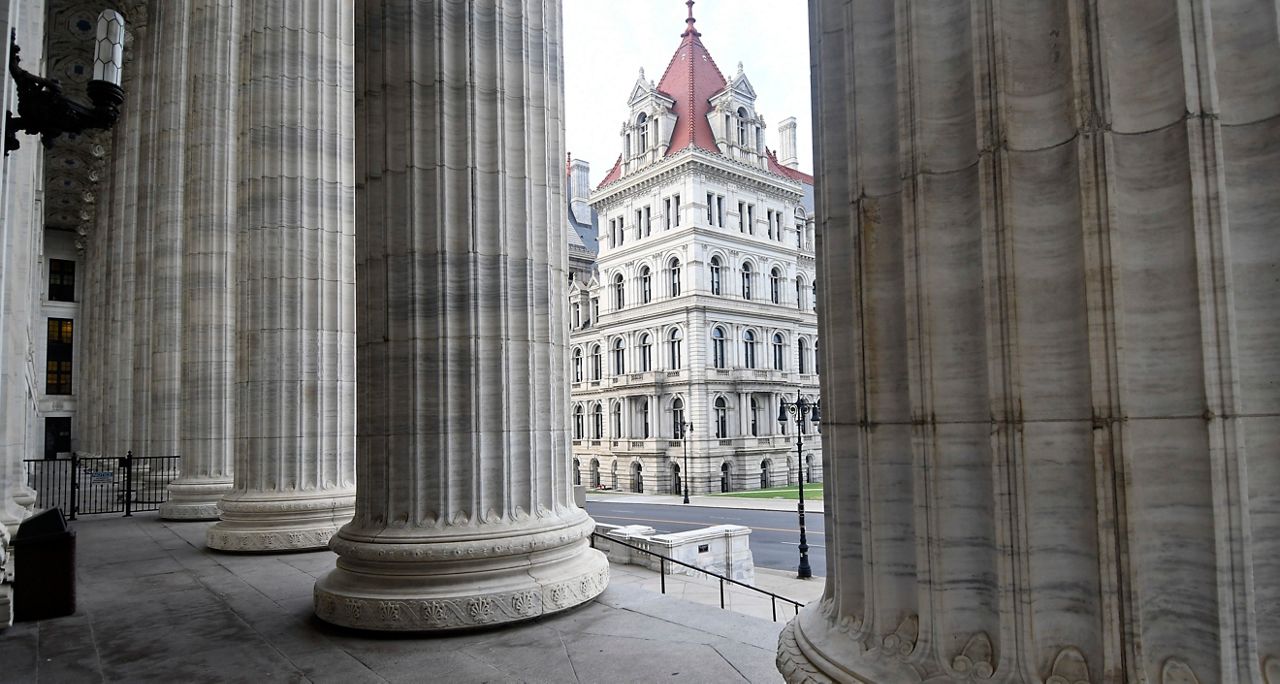Redistricting may sound like a dry and wonky topic. But it's actually very important. It's a process that determines who your representatives in your county, state and federal government will be.
The process is often derided. We tend to think that voters get to choose their representatives. But redistricting historically has allowed people in power to choose their voters by drawing the boundaries for legislative seats. New York has tried multiple times to reform this process and now lawmakers this week are doing it again.
Lawmakers in Albany this week are considering yet another constitutional amendment to reform redistricting. Keep in mind an amendment must pass twice by two separately elected sessions of the Legislature (in 2020 and 2021, for example) before going to voters in a ballot referendum.
So I spoke with Blair Horner of the New York Public Interest Research Group to sort all of this out. He's a critic of the 2014 amendment and explained what the new proposal would do for redistricting in New York.
What follow is a transcript of our conversation on Capital Tonight, lightly edited for time and clarity.
What's the status of redistricting as it stands right now in New York?
Blair Horner: Every 10 years since 1790, New York has done a Census and that decides the political boundaries in this state. In New York, this process for years has been commandeered by the major political parties for their own advantage.
So for many decades, the Republicans controlled the state Senate and drew the lines and they had an agreement they wouldn't mess with the Assembly lines who drew the districts for themselves. And so, you had few competitive districts as possible in New York, which helps drive down voter participation and deprives New Yorkers of competitive elections.
That came to a head in 2012 and that year there was another agreement to once again gerrymander the districts for the Senate and Assembly. But Governor Cuomo insisted they pass a constitutional amendment for voters to approve changing that system. What it did was it created a redistricting commission that are appointed by the legislative leaders, two each, and then those eight individuals appoint two other members.
So the commission would have 10 members and they would be charged with drawing district lines for the Legislature. The Legislature would have to then approve or disapprove what they did and the governor could then veto. If the Legislature or the governor didn't like what the commission did twice, the Legislature could then draw their own lines.
So that was the major change in 2014 that was approved by voters overwhelming. In the voting set up that they added to the constitution there was an effort by the governor and the legislative leaders if both houses were controlled by one party, minority parties would have more of a say in how those lines were drawn. The vote would have to be a two-thirds majority for those lines to be approved.
What's wrong with that arrangement?
Horner: We didn't like the proposal in 2014 because the commission wasn't independent. We don't think that political boundaries in the state of New York should be drawn by the political parties. It should be designed by people representing the public, not the parties. And this whole system of having certain ways to benefit political parties or the detriment of political parties -- it never made any sense to us.
What is the amendment the Legislature is working on this week?
Horner: When they passed the (first) amendment in 2014, there were certain things that they didn't do. There's a lot of language in the state constitution from 1894 that's been declared unconstitutional, but it's all still there.
If the Trump administration is able to not count immigrants in the Census, under the state constitution you could probably get away with that. Some of the proposals that have been under consideration this week would clear out that 1894 language, make clear everyone counts in redistricting. It also changes the timetables. When the amendment was done in 2014, the primaries were in September, now they're in June. Also, we didn't know at the time there wasn't going to be a pandemic. And the proposal caps the number of senators (at 63 members).
And the amendment under consideration says that if seven members of the commission agree to the proposal then you only need majority support in both houses to approve the lines. If less than seven members of the commission approve it then you end 60 percent vote in both houses and it doesn't matter whose in charge of both houses.
So it changes the nature of it and it gets rid of the political party part of it.




